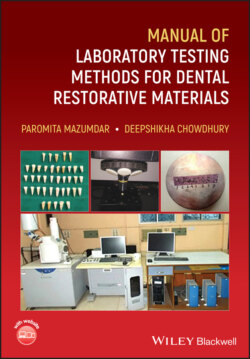Читать книгу Manual of Laboratory Testing Methods for Dental Restorative Materials - Paromita Mazumdar - Страница 12
1.1 Tensile Strength
ОглавлениеWhen a body is subjected to axial forces in a straight line and in opposite directions, it results in tension. The resistance of the material to this load is called tensile strength. The length alteration that results from the application of a tensile force on a body before its rupture is defined as elongation. Nominal value of tensile strength is determined by the equation of load and cross‐sectional area (Kgf/cm2). Values of stress–strain determine a curve, characterizing the performance of the material under tensile test. From this curve, elastic modulus, ultimate tensile strength, resilience and toughness of such product can be registered [7]. Tensile testing is normally applied to materials which are placed under loading that is generally applied in different directions, as the opposing cusps move over the restoration surface. Loads that stretch or elongate a material cause tensile stresses (as shown in Figures 1.3–1.5).
Figure 1.3 Tensile strength assessment.
Figure 1.4 Tensile strength assessment.
Figure 1.5 1, No load; 2, uniform elongation; 3, maximum load; 4, necking.
